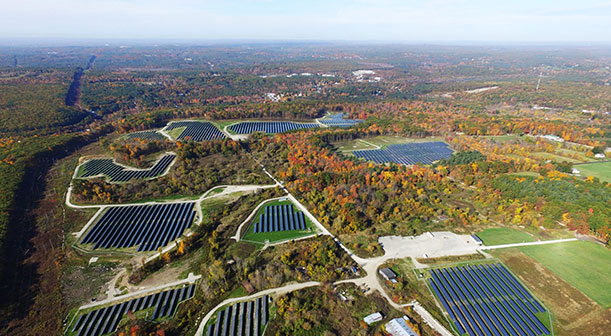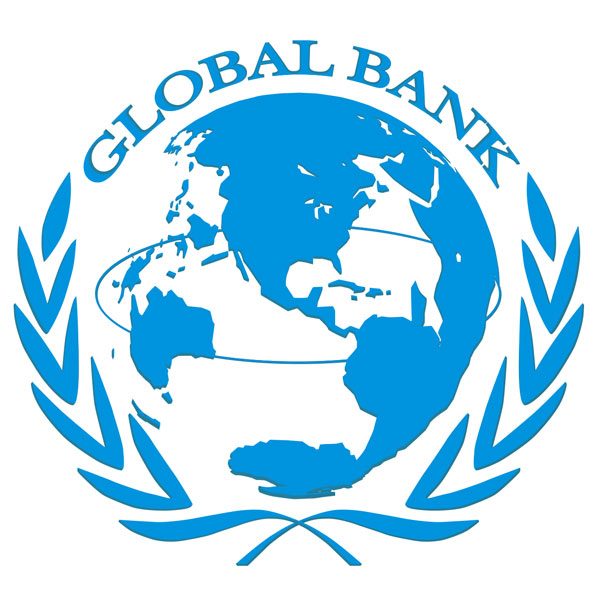Enhancing Disaster Preparedness for Effective Response

Enhancing disaster preparedness for effective response and to “Build Back Better” in recovery, rehabilitation and reconstruction
Natural hazards claim 1.35 million lives per year.
Over the past 20 years, typhoons, floods, droughts, earthquakes and other natural hazards have claimed 1.35 million lives and affected on average 218 million people per year. They also have devastating effects on socio-economic development with a global economic impact since 2005 surpassing USD 1.3 trillion, mostly in developing countries. If better preparedness planning was in place, time, money and lives could have been saved. The Global Bank Disaster Risk Reduction and Reconstruction Fund – An Umbrella Trust Fund (the “Trust Fund,” “GB DRRRF,” or “DRRRF”) to develop and strengthen, as appropriate, coordinated global, regional, national approaches and operational mechanisms to prepare for and ensure rapid and effective disaster response in situations that exceed national coping capacities.
OVERVIEW
The steady growth of disaster risk, including the increase of people and assets exposure, combined with the lessons learned from past disasters, indicates the need to further strengthen disaster preparedness for response, take action in anticipation of events, integrate disaster risk reduction in response preparedness and ensure that capacities are in place for effective response and recovery at all levels. Empowering women and persons with disabilities to publicly lead and promote gender equitable and universally accessible response, recovery, rehabilitation and reconstruction approaches is key. Disasters have demonstrated that the recovery, rehabilitation and reconstruction phase, which needs to be prepared ahead of a disaster, is a critical opportunity to “Build Back Better”, including through integrating disaster risk reduction into development measures, making nations and communities resilient to disasters.
Crisis Preparedness and Response: Leave No One Behind
International cooperation for disaster risk reduction is pronounced. A large-scale disaster might be beyond the capacity of one country, and in many cases, damage itself, goes beyond boundaries. Promotion of regional and global cooperation will be essential to prepare for and respond to such situations, in particular as hazards know no borders. Cooperation must not only be international, but regional.
Disaster-prone developing countries (V20: The Vulnerable Twenty Group), in particular the least developed countries, small island developing States1, landlocked developing countries and African countries, as well as middle-income countries facing specific challenges, warrant particular attention in view of their higher vulnerability and risk levels, which often greatly exceed their capacity to respond to and recover from disasters. Such vulnerability requires the urgent strengthening of international cooperation and ensuring genuine and durable partnerships at the regional and international levels in order to support developing countries to implement the Sendai Framework for Disaster Risk Reduction 2015-2030 - a decade-long plan to help make the world safer from disasters caused by natural hazards — and to support the implementation of the Global Climate Agreement in Paris in accordance with their national priorities and needs. Similar attention and appropriate assistance should also be extended to other disaster-prone countries with specific characteristics, such as archipelagic countries2, as well as countries with extensive coastlines.
Disasters can disproportionately affect small island developing States, owing to their unique and particular vulnerabilities. The effects of disasters, some of which have increased in intensity and have been exacerbated by climate change, impede their progress towards sustainable development. Given the special case of small island developing States, there is a critical need to build resilience and to provide particular support through the implementation of the SIDS Accelerated Modalities of Action (SAMOA) Pathway in the area of disaster risk reduction.
African countries continue to face challenges related to disasters and increasing risks, including those related to enhancing resilience of infrastructure, health and livelihoods. These challenges require increased international cooperation and the provision of adequate support to African countries to allow for the implementation of the Sendai Framework for Disaster Risk Reduction 2015-2030 and to support the implementation of the Global Climate Agreement in Paris in accordance with their national priorities and needs.
Given their different capacities, as well as the linkage between the level of support provided to them and the extent to which they will be able to implement the Sendai Framework for Disaster Risk Reduction 2015-2030 and to support the implementation of the Global Climate Agreement in Paris in accordance with their national priorities and needs, developing countries require an enhanced provision of means of implementation, including adequate, sustainable and timely resources, through international cooperation and global partnerships for development, and continued international support, so as to strengthen their efforts to reduce disaster risk.
In addressing economic disparity and disparity in technological innovation and research capacity among countries, it is crucial to enhance technology transfer, involving a process of enabling and facilitating flows of skill, knowledge, ideas, know-how and technology from developed to developing countries in the implementation of the Sendai Framework for Disaster Risk Reduction 2015-2030 and to support the implementation of the Global Climate Agreement in Paris in accordance with their national priorities and needs.
Advancing the Frontiers of Crisis Preparedness and Response
 In the face of apparent insurmountable odds, the Global Bank Disaster Risk Reduction and Reconstruction Fund – An Umbrella Trust Fund has found ways to rebuild smarter, stronger, safer and faster. We are successful because before disaster strikes, we have already laid the groundwork by fortifying the DRRRF’s physical, digital, financial, and societal infrastructure in an effort to better mitigate and manage post-crisis reconstruction.
In the face of apparent insurmountable odds, the Global Bank Disaster Risk Reduction and Reconstruction Fund – An Umbrella Trust Fund has found ways to rebuild smarter, stronger, safer and faster. We are successful because before disaster strikes, we have already laid the groundwork by fortifying the DRRRF’s physical, digital, financial, and societal infrastructure in an effort to better mitigate and manage post-crisis reconstruction.
The Global Bank Disaster Risk Reduction and Reconstruction Fund – An Umbrella Trust Fund is mobilising large-scale financing for effective post-disaster reconstruction and recovery efforts including leveraging public and private climate finance in an effective, catalytic manner to an increased adaptive capacity and a low greenhouse gas emission and climate-resilient development, aiding in the achievement of related Sustainable Development Goals, in close coordination within the overall Global Bank Group system-wide response.
The Global Bank Disaster Risk Reduction and Reconstruction Fund – An Umbrella Trust Fund addresses the human and institutional dimensions of crisis preparedness, relief, recovery and reconstruction. By supporting on-the-ground technical assistance to help developed, and developing countries integrate disaster risk management (DRM) and climate change adaptation into development strategies, policies and investment programs, including post-disaster recovery and reconstruction, DRRRF lays the foundations for sustainable recovery and long-term development.
Financing for Post-Disaster Recovery and Reconstruction
The Global Bank Disaster Risk Reduction and Reconstruction Fund – An Umbrella Trust Fund is mobilising large-scale financing for effective post-disaster reconstruction and recovery efforts including leveraging public and private climate finance in an effective, catalytic manner to an increased adaptive capacity and a low greenhouse gas emission and climate-resilient development, aiding in the achievement of related Sustainable Development Goals.
The Global Bank Disaster Risk Reduction and Reconstruction Fund – An Umbrella Trust Fund provides a time-tested and a very successful recovery and reconstruction model for post-disaster reconstruction based on partnerships between government, donors, communities and other stakeholders. The partnerships formed by the DRRRF are structured with the objective to play a key role in the strong performance of the post-disaster reconstruction and recovery programmes and to support robust results achievement. Pooling resources through the Global Bank Disaster Risk Reduction and Reconstruction Fund will result in the harmonization of donor efforts and provide an important platform for policy dialogue for many stakeholders.
The Global Bank Disaster Risk Reduction and Reconstruction Fund – An Umbrella Trust Fund was designed to fill the gaps in reconstruction in line with government priorities and to bring together key government players, donors, and members of civil society and communities.
To learn more about the Global Bank Disaster Risk Reduction and Reconstruction Fund, what we do and How we do it and Management and Organisation, visit the About DRRRF and the Frequently Asked Questions Section of the DRRRF Website Section.
For information about the Global Bank please visit http://www.global-bank.org
| 1 | Small island developing States are: Afghanistan, Bangladesh, Barbados, Bhutan, Burkina Faso, Cambodia, Comoros, Costa Rica, Democratic Republic of the Congo, Dominican Republic, Ethiopia, Fiji, Ghana, Grenada, Guatemala, Haïti, Honduras, Kenya, Kiribati, Madagascar, Malawi, Maldives, Marshall Islands, Mongolia, Morocco, Nepal, Niger, Palau, Papua New Guinea, Philippines, Rwanda, Saint Lucia, Senegal, South Sudan, Sri Lanka, Sudan, Tanzania, Timor-Leste, Tunisia, Tuvalu, Vanuatu, Viet Nam and Yemen |
| 2 | Archipelagic states are states that are composed of groups of islands forming a state as a single unit, with the islands and the waters within the baselines as internal waters. Under this concept ("archipelagic doctrine"), an archipelago shall be regarded as a single unit, so that the waters around, between, and connecting the islands of the archipelago, irrespective of their breadth and dimensions, form part of the internal waters of the state, and are subject to its exclusive sovereignty. |

